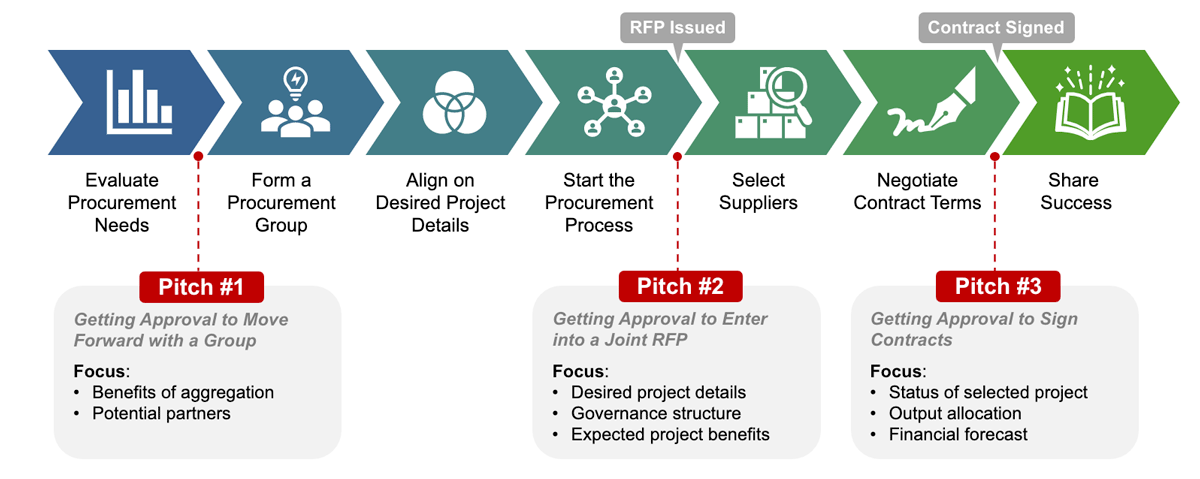During the procurement process, the deal champion will need to make at least three pitches for the aggregated transaction:

Note: A buyer’s pitch schedule will depend on a procurement group’s decision-making model and chosen procurement process.
The first pitch focuses on getting initial buy-in from senior leadership before forming a procurement group. This second pitch should present decision makers with an overview of potential outcomes alongside specific details included in the RFP.
The following key items should be addressed when pitching an RFP to decision makers:
- The anticipated benefits to the local government with respect to its climate and energy goals
- Any other anticipated co-benefits such as local jobs, tax revenue, health benefits, etc.
- The partners that are expected to participate in the RFP
- The RFP criteria and evaluation process, including review by any third-party technical experts
- The expected financial performance and the implications for the local government’s future budgets
- An overview of key procurement statistics, including the size of the project being pursued, procurement method and resource types under consideration, and potential project locations
- An estimated timeline for the RFP process and the project construction and operation process.
If any of the local government members require a resolution or ordinance to pursue a certain type of renewable energy deal (e.g., a virtual PPA), this pitch needs to include all the information that the local government needs to issue a formal authorization, which may otherwise be included in the aggregated RFP or the signing of group governance documents.
